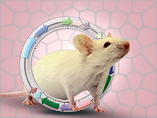

In the early days of engineered animal models, simple knockout and transgenic mice were used to examine gene function. Researchers began to dissect the roles of individual genes by studying phenotypes of mice lacking or overexpressing specific genes. However, constitutive knockouts and transgenics are not adequate for analyzing the function of many genes. For example, genes with important functions in adult animals may be embryonic lethal when knocked-out if they also have key functions in early development. Now, a variety of conditional and inducible animal model systems are available to spatially and temporally control gene expression.
For many cell types and developmental stages, there are now well-described promoters or enhancers that allow targeted expression of transgenes at specific times and locations within an animal model. These promoters can be combined with inducible and conditional systems to tightly control genes of interest.
View list of commonly used promoters on VectorBuilder
The most common and effective drug-inducible system in rodent models is based on tetracycline (tet) responsive promoter elements. There are both tet-ON and tet-OFF systems, so that drug administration to animals can be used to either activate or repress gene expression, respectively1. Drug-inducible promoter systems allow reversible activation/inactivation of genes of interest.
Recombination systems enable conditional and stable induction or suppression of gene expression in a particular developmental stage or specific cell type. The commonly used recombinase, Cre, recognizes specific sequences (loxP), and catalyzes recombination between two loxP sites. By crossing with mice expressing Cre under the control of tissue-specific or inducible promoters, Cre-mediated recombination will be restricted to specific tissues or time points.
Depending on the arrangement of loxP sites within the engineered allele, Cre expression can be used for a variety of effects. The most common usage is in Cre-mediated excision of loxP-flanked (i.e. “floxed”) portions of a gene, which can be used to conditionally knock-out a gene. Alternatively, Cre-controlled gene activation can be achieved with a removable transcriptional stop element (LoxP-Stop-LoxP). This type of conditionally activatable alleles of oncogenes have been used to generate numerous mouse models of tissue-specific cancers2-3.
Alternatively, other recombinase systemsare also available for making conditional alleles in animal models. The Dre recombinase from the bacteriophage D6 is closely related to Cre, but recognizes a site called rox, distinct from loxP4. Flippase (FLP) is a recombinase that mediates DNA recombination between two recognition sites referred to as FRT (Flippase Recognition Target)5.
Cre expression can be coupled to drug-inducible promoters to further control when expression occurs, but another very successful strategy is based on a fusion between Cre and a mutant version of estrogen-receptor binding domain (called Cre-ER). In the uninduced state, Cre-ER remains in the cytoplasm, but when the ligand 4-hydroxytamoxifen is added, CreER enters the nucleus, leading to Cre-mediated recombination6,7.
Cyagen offers conditional knockout and knockin mouse model generation using our next generation, proprietary TurboKnockout® technology which can deliver highly complex cKO/KI models in just 6-9 months. If you need cKO/KI models in rat, our CRISPR based models can assist.
All of our transgenic models can feature Cre/lox systems, Tet-on systems, and many other conditional and inducible approaches allowing you to better control gene expression. These include:
| Mouse Models | Rat Models |
|---|---|
| Plasmid/BAC based transgenics | Plasmid/BAC based transgenics |
| PiggyBac transgenics | PiggyBac transgenics |
| PiggyBac-on-BAC transgenics | PiggyBac-on-BAC transgenics |
If you need custom vectors and viruses for in-vitro or in-vivo studies that utilize conditional or inducible expression of your gene of interest, VectorBuilder.com offers many backbones and vector systems with these features:
| Mammalian Inducible Expression (Tet-On/Off) | Mammalian Conditional Expression (Cre-Lox) |
|---|---|
| Regular plasmid | Regular plasmid (LoxP-Stop-LoxP) |
| Lentivirus | Regular plasmid (FLEX) |
| PiggyBac | PiggyBac |
We will respond to you in 1-2 business days.